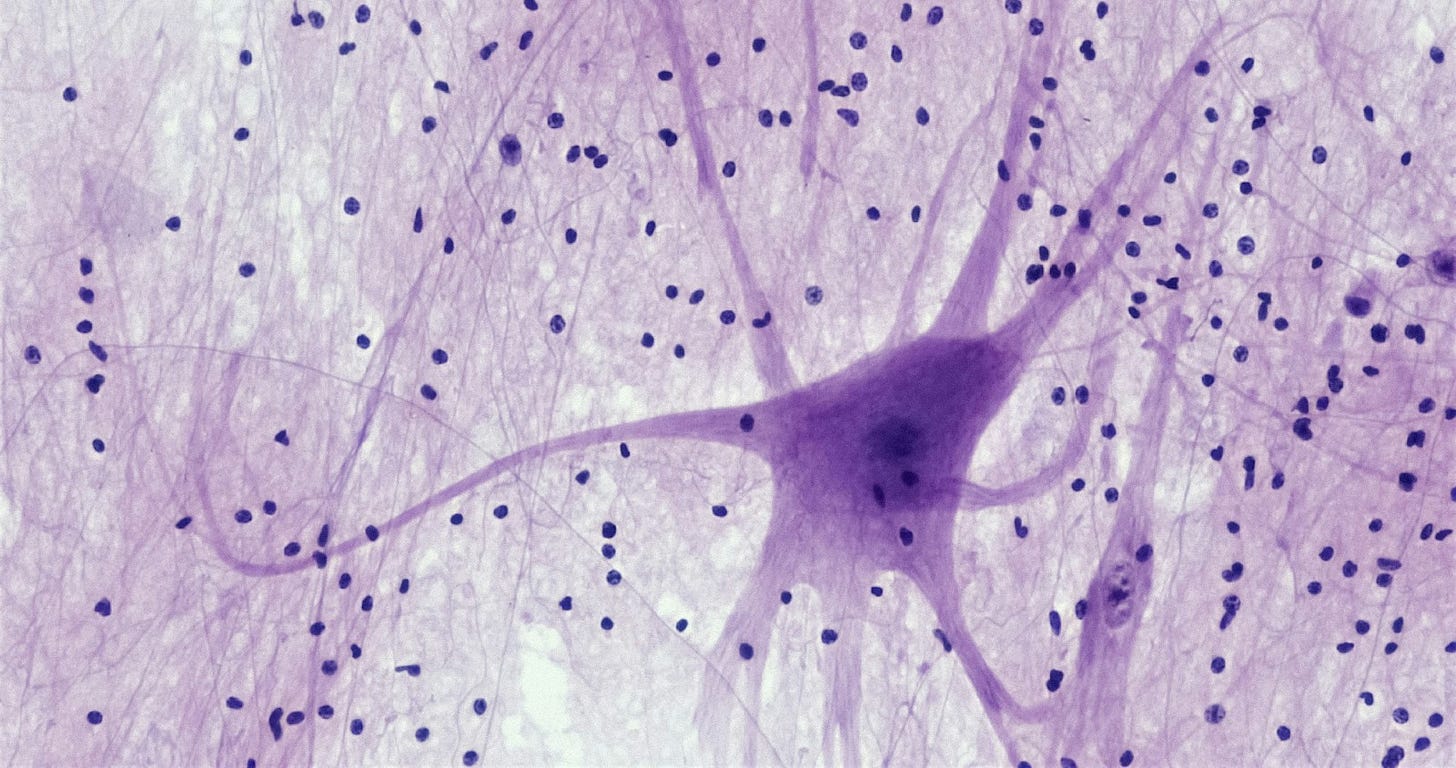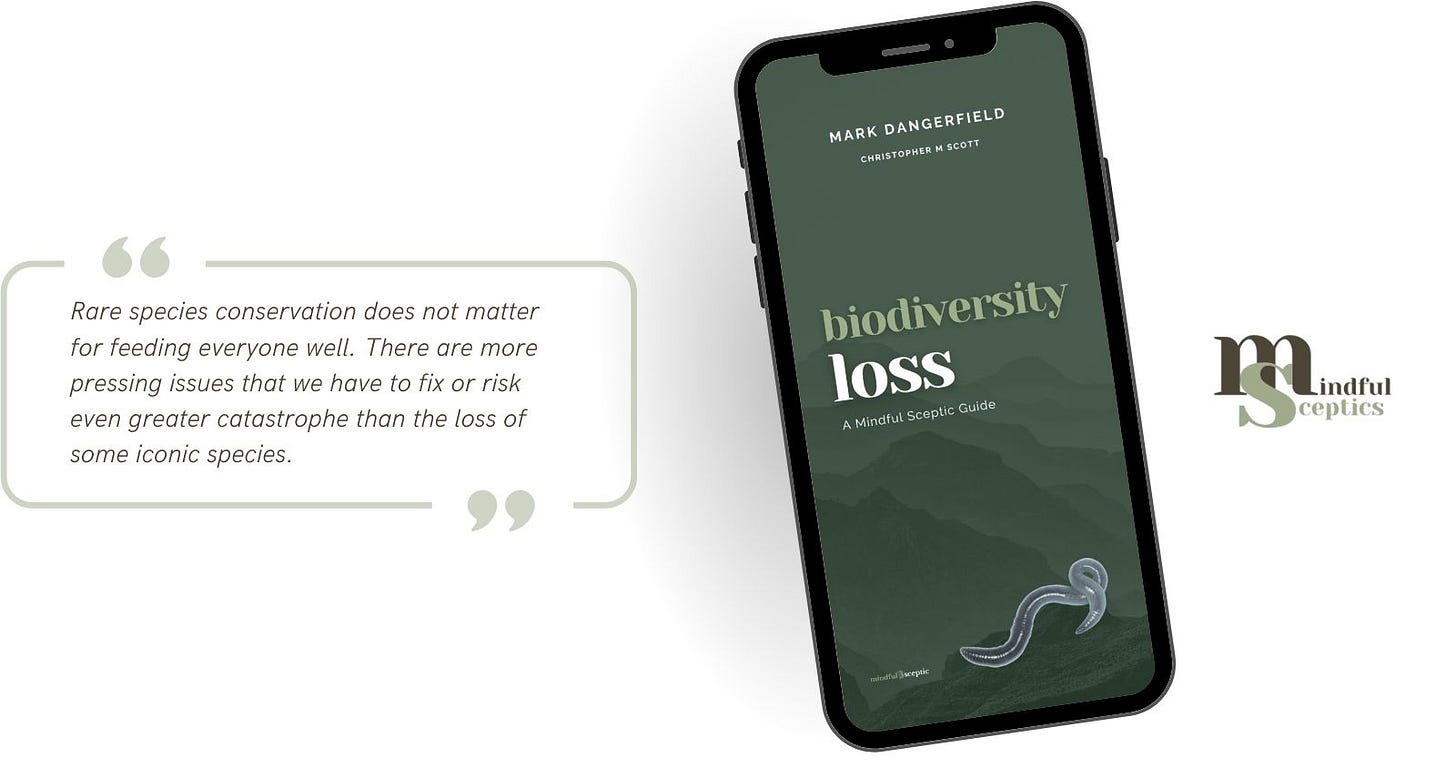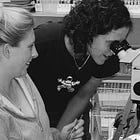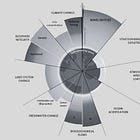Finding Time for Science in Teaching
According to the latest education research, Australian teachers are overworked, underpaid, and overwhelmed by the need to know the settled science.
Imagine explaining how a cell works to a room full of teenagers, only to realise that what you learned about cellular biology in university barely scratches the surface of what scientists know today.
For teachers across Australia, this is a daily reality.
With science advancing at breakneck speed and research papers multiplying like bacteria in a petri dish, staying current with settled science has become another weight on already overburdened educators.
I know this pressure intimately.
As an ecologist who spent decades in academia before pivoting to entrepreneurship, I've watched the subject of my PhD, the obscure topic of woodlouse ecology, expand from a manageable 200 research papers back in the 1980s to thousands of studies spanning dozens of sub-disciplines. If subject experts struggle to keep up with their narrow specialties, how can we expect teachers to master the breadth of science their students need?
In this issue of the newsletter, I'll take a look at how much expertise is enough and try to explain why we need to help our overloaded teachers.
You'll begin to understand…
Why teachers are struggling with scientific knowledge (and why it matters)
How artificial intelligence is changing the game for accessing research
What mindful scepticism offers as a solution
Practical ways to evaluate evidence without drowning in information
Let's explore how we can turn the challenge of "keeping up" into an opportunity for deeper understanding.
Overload and overwhelm
Research suggests that, before the COVID-19 pandemic disrupted everything, Australian teachers worked 50% more hours than they were paid to do and spent less than half their working hours in the classroom.
Parents might be okay with this if the time outside the class was spent preparing for the next one, but teachers spent most of their time on admin tasks. This seems bonkers, and the teachers say they are fed up.
The number of teachers leaving the profession within their first five years ranges from 5% to 6%, with some estimates reaching 7% per year. This results in approximately one-third of new teachers leaving the profession every generation.
However, this undeniable problem of overload, which so easily leads to being overwhelmed, provides the context for today's story.
I also want to discuss another pressure teachers face, specifically their familiarity with established scientific principles.
What is settled science?
The scientific theories, principles, or concepts that have achieved a high consensus within the scientific community and are widely accepted as accurate and reliable are called settled science.
These ideas have undergone extensive research, scrutiny, and peer review, and substantial evidence supports them. Conventional wisdom believes them to be true.
Settled science can evolve based on discoveries and advancements, but is often used to describe scientific knowledge that is considered well-established and not subject to significant controversy or debate within the scientific community.
Settled science is humanity's most reliable knowledge—the ideas and theories that have withstood decades, sometimes centuries, of rigorous testing and scrutiny.
For example, in 1665, Robert Hooke peered through a primitive microscope at a slice of cork and saw tiny compartments he called "cells" because they reminded him of monks' rooms.
Then, in the 1830s, two German scientists, Matthias Schleiden and Theodor Schwann, proposed that all living organisms are composed of cells.
Over the following decades, scientists tested the cell idea worldwide by examining countless organisms. They observed plants, animals, fungi, and bacteria; every investigation supported the cell theory.
Through thousands of experiments and observations, three key principles emerged that we now consider settled science…
All living things are composed of one or more cells
Cells are the basic unit of structure and organisation in organisms
All cells arise from pre-existing cells through cell division
What makes this settled science?
Multiple lines of evidence support it, from microscopy to biochemistry to genetics. We can observe cell division directly, track the movement of molecules between cells, and measure cellular processes in real time.
No credible evidence has ever contradicted these fundamental principles.
However, an important nuance is especially relevant to teachers in the classroom… being "settled" doesn't mean we know everything.
Scientists continue to make exciting discoveries about how cells work, communicate, and evolve. What's settled is the basic framework.
This combination of rock-solid fundamentals with ongoing refinement and discovery is what makes science such a powerful tool for understanding our world. It gives us the confidence to build upon established principles while remaining open to new insights and deeper understanding.
But it also means that you can’t leave studying behind.
If you teach what you were taught, you will be out of date in a few years or even months in some areas of science, such as AI. What you thought was settled has moved on to the next suburb.

Pressure on the teacher
Much of this new knowledge resides within scientific communities and their communications through the research literature, conferences, and online forums. It is written and spoken in the language of research, evidence, and evaluation.
Not what most teachers have the time to engage with on a daily basis.
However, everyone wants the kids to learn about the latest and greatest in settled science. Parents, students, and teachers themselves want to stay up-to-date with the latest knowledge.
Even the Australian government recognises this and encourages overworked teachers to use research and evidence-based initiatives to enhance school performance. This includes a ‘national evidence base to inform policy development and improve education outcomes in early childhood and school education’, a long-winded way of asking teachers to be more evidence-based.
Here is what education researchers at the Monash Q Project say about using research evidence in the classroom
By reading and using the latest research, teachers can improve their knowledge and teaching skills concerning a number of everyday issues. These range from student well-being and school engagement to subject expertise and different teaching approaches, including online learning. But using research is complex and takes time to do well – time that teachers just don’t seem to have.
There are numerous evidence-based initiatives teachers could take. Here are a few of them:
Teachers can leverage the latest scientific research to enhance their knowledge and teaching skills across various everyday issues by following these strategies:
Stay informed by regularly accessing reputable research journals, research databases, and publications.
Participate in professional development opportunities focusing on integrating scientific research into teaching practices.
Establish connections with researchers and institutions.
Prioritise evidence-based teaching methods that encompass subject matter, including classroom management, student engagement, and instructional design.
Incorporate educational technologies backed by research to enhance lessons, engage students, and facilitate personalised learning experiences.
Encourage inquiry-based learning to foster student curiosity, critical thinking, and problem-solving skills.
Explore research on diverse learning styles and tailor teaching methods to accommodate individual students' strengths and preferences.
Before you stop reading because it's not on the list, we’ll look at the AI tools in a moment.
Before that, let’s look at one of the benefits of keeping up with the latest research…

Subject expertise
I started my undergraduate degree a long time ago, when big hair, shoulder pads, and Spandau Ballet were cultural norms.
My undergraduate degree in environmental science, which began in 1979, covered a wide range of core subjects, including geology, sedimentology, sustainable development, and extensive ecological science, which ultimately became my profession.
Ecology was still young and growing fast with all the associated pains. It was just getting its evolutionary biology credentials in place to better understand individuals, populations, and communities, as proclaimed in the subtitle of the standard textbook "Ecology" by Begon, Harper, and Townsend, which most of us used to collate our understanding of the subject.
Since then, the subject has grown in scope and volume. We now know significantly more about how organisms interact with one another and their environment.
In the autumn of 1983, I wrote a review on the ecology of woodlice as a prelude to my PhD research. My supervisors gave it the nod partly because it was thorough, citing over 200 references, each meticulously researched in libraries or through direct correspondence with the authors.
Review work was a fundamental skill I learnt at the start of my research. The logic is to establish the settled science before adding to it. Should I repeat that review today, nearly 40 years later, it would be very different in output and process.
Technology enables me to search rapidly through the available research evidence. Suppose I type ‘woodlice ecology’ into Google Scholar and restrict returns to review articles only (articles that summarise the primary research, similar to my 1980s effort). In that case, the search returns over 100 citations since 2018.
Over 100 review articles suggest that a lot has happened. One is that ‘woodlouse ecology’ is now a topic split into many subtopics worthy of review. It also indicates that primary research publications, descriptions of experiments, observations, and theories run into thousands of individual papers.
Such a volume of research material is daunting.
If I were to consult primary sources, that might result in 1,000 articles, and at least a month of 8-hour days, assuming I work efficiently without breaks.
This is to establish the content.
Then, I need to sort through and evaluate the research conclusions. Evaluation requires a reliable evidence hierarchy and a method for recording the relevance and quality of each review.
Even if I use a database to assist with this consolidation exercise, several more days of work are required to review and decide on the settled science of terrestrial isopods. Technology saves me time, but the sheer volume of research on an obscure group of animals, about which few people are aware and which has little relevance to humanity, requires months of dedicated effort.
Today, a fresh-faced PhD student has a vast amount of reading to do to scope the content of their subject, even one as obscure as woodlouse ecology.
There will be reading because, as clever as AI chatbots are at scraping and summarising the research for us, a human still has to absorb the facts to explain them—again, we’ll come to the AI solutions shortly.
However, let’s return to the teachers.

Teachers do not have the time
No surprise, then, that in their pre-COVID survey, the Monash researchers found that teachers “did not have adequate time to engage with research” (76%) and struggled to “keep up with new research” (76%), doing so mostly on their own time.
Assuming ‘keeping up’ with research means they read widely on the topics they teach, and could only cover a fraction of what is known. And only one in four teachers finds the time.
Such constraints are predictable, given that we were told ‘using research is complex and takes time to do well,’ and the teachers are already busy.
But another finding was far more serious. Teachers said that they lacked the necessary skills to understand the research. At least half of the teachers (55%) didn’t know where to look, 64% didn't know how to interpret the findings, and 49% were unsure how to judge the quality of the research.
These are disturbing numbers.

Where and how to look for evidence
As the woodlouse anecdote suggests, time constraints make looking for evidence from primary sources impossible.
The primary literature, the research papers describing the experiments and observations of scientists, runs into the thousands for even a narrow, well-defined subject. A topic like ‘healthy diet’, 'climate change adaptation’, or ‘fertiliser efficiency’ would yield tens of thousands of articles.
It is much more efficient to search for published reviews on specific topics. This is typically accomplished through a constrained search using Google Scholar, which usually yields a more manageable number of peer-reviewed publications.
But a list is just the start. What happens next is more important.
Choose among the many articles which ones you want to spend time understanding. This is the ‘where to look’ problem.
Okay, I shouldn’t tease you any longer.
We have to take a closer look at the artificial intelligence tools.
In 2024, there was a massive surge in the capability and applicability of AI tools for everyday use, especially the large language models (LLMs) that process input text (what we ask) and predict the most likely following words based on patterns learned from its training data, allowing it to generate human-like text responses, translate languages, answer questions, and perform various language-related tasks.
LLMs can search for information, scrape it from various sources, and provide content summaries. They can also evaluate the evidence to some degree.
In addition to the usual suspects (Chapt-GPT, Claude, Gemini), I use Perplexity.ai, Notebook LM, and Scite.ai alongside Google Scholar; however, new tools are available daily.
Here is a summary of the key AI features the models have that can help teachers convey the settled science.
Semantic Search: Using NLP to understand the context of queries and provide more accurate results (e.g., Semantic Scholar, Iris.ai).
Citation Sentiment Analysis: Analysing whether citations support, contradict, or simply mention a work (e.g., Scite.ai).
Personalised Recommendations: Suggesting papers and researchers based on your search history or reading preferences (e.g., Google Scholar, ResearchGate).
Paper Clustering and Categorisation: Automatically organising and categorising papers based on themes or content (e.g., EndNote, Zotero).
Systematic Review Assistance: AI-powered tools that help with systematic literature reviews by automating inclusion/exclusion and paper ranking (e.g., Rayyan, Covidence).
Teachers might jump on these LLMs. Helping to find and summarise the latest settled science and content for their subjects might reduce the effort from days to minutes, but they still have to interpret and evaluate what the models produce.
Systematic reviews remain the best starting point for interpreting research, as they systematically gather and assess evidence to answer specific questions.
And what is the question?
What does the teacher need to know to be helpful to their students? Questions should be precise because if they're too broad, relevant information gets lost; if they're too deep, there might not be enough evidence to answer them.
And what about the context?
Understanding context is crucial for interpretation. It means knowing both what you need to know and why you need to know it. This contextual understanding remains a challenge for AI and language models, which are a long way from perception.
Then, there is the quality of the research. The best researchers combine strong scientific methodology with comprehensive subject knowledge, including its history and current developments. This is where the perception comes from. Quality research also demonstrates thorough methodology, strong experimental design, appropriate statistical analysis, and clear mathematical description—the science skills that are essential to evidence.
Research quality varies significantly. Some researchers make fundamental mistakes in methodology, question formulation, or statistical analysis, resulting in varying levels of research quality due to human error. The LLMs are not yet good enough to cover quality assurance. The teacher will have to do some of that.
LLMs and other AI tools will improve in all evidence generation and evaluation tasks in the next few years. But in the meantime, teachers and curious, mindful sceptics will have to do some of the heavy lifting themselves.
This begs the following question…. How much lifting?

How much subject expertise does a teacher need?
It is both unnecessary and unreasonable to expect teachers to be subject experts. Indeed, they should be broader than deeper for most science disciplines with a sound understanding of the scientific method and the skills of the mindful sceptic.
But if I had only the content knowledge of ecology that I had learned in my undergraduate years, it would not be enough for modern science. A whole ecology-related discipline, biodiversity, has emerged since I graduated, not to mention all that woodlouse research.
It is enough to know the key advances in the subject, especially where this involves the arrival of new niches, theories and controversies, plus a generous set of examples or case studies to make the content enjoyable.
The survey results suggest that teachers want to know more than they do. Three-quarters said they struggled to keep up with new research, but they could probably get enough detail through the LLMs to boost their confidence.
Quality depends on the transfer of information from the question you ask a chatbot to its answer and your interpretation of the output. This means spotting when the models hallucinate (better than they were, but still making things up) and knowing what the output means, which takes us back to context and the importance of human perception.
AI cannot do either.
From Science Expert to Science Guide
Most parents want a positive, high-quality education experience for their school-aged kids. They want them to learn and be prepared for higher education or the workforce. Presumably, they also want them to be up to date.
The teachers want this too.
A lack of time and skills means that only a third of schoolteachers regularly use research (37%) or university-based guidance (30%) in their teaching, even though they know that “using research well matters when it comes to doing a good job and supporting their professionalism.”
Although only a third manage to use research regularly, nearly three-quarters of teachers surveyed believed it was “critical to being a good educator.”
It is unrealistic and unfair to ask teachers to be involved in all the latest research or even the settled science. The volume of information that is now readily accessible makes keeping up a considerable challenge, even if they get help from artificial intelligence.
The answer may not lie in knowing the settled science or subject content. Maybe it would be better to let teachers teach and apply the skills to interpret what is available better.
They could become mindful sceptics and pass those skills on to their students.
Presumably, the skills to sort the facts from fiction are what all parents should want for their kids.
Now, that is an assumption worth testing.
Mindful Momentum
The Research Review Reset
Take one topic you teach or care about. Spend 15 minutes using Google Scholar to find the three most recent review papers. Read just the abstracts and conclusions.
Write down three key changes in understanding from when you first learned about this topic. This builds confidence in finding current knowledge without getting overwhelmed.
Take it a step further and ask one of the AI tools to assist with summary and history of the topic.
Key Points
Today's teachers face immense pressure to keep up with settled science while struggling with excessive workload and administrative tasks. Research shows most teachers work 50% more hours than they're paid for, with less than half their time spent teaching, leading to burnout and high turnover rates.
While teachers recognise the importance of using scientific research in their teaching, only about one-third regularly engage with research or university guidance. The barriers are significant - 76% report inadequate time to engage with research, and over half lack confidence in finding or interpreting scientific literature.
The volume of scientific knowledge has grown exponentially, making it impossible for teachers to review even narrow subjects comprehensively. Modern AI tools offer potential solutions for finding and summarising research, but teachers still need skills to interpret and evaluate this information effectively.
The solution may not lie in expecting teachers to master all the latest research but rather in equipping them with mindful scepticism—the skills to evaluate evidence, interpret findings, and teach students to think critically about scientific information. This approach could transform the challenge of information overload into an opportunity for better science education.
You Might Also Like
Curiosity Corner
What this issue is about…
As scientific knowledge explodes and teachers struggle to keep pace, this exploration of research overload reveals how embracing mindful scepticism might be more valuable than chasing endless content expertise.
And here are some better questions…
What if teachers focused on teaching scientific thinking rather than mastering scientific content? This would be better because it would reframe the challenge from an impossible task (knowing everything) to an achievable goal that benefits students more.
How much subject expertise do teachers need to teach science effectively? Better because it challenges assumptions about expertise and opens discussion about what makes teaching effective.
Can artificial intelligence help bridge the gap between research overload and classroom reality? Better because it looks beyond the problem of information overload to explore practical solutions while remaining appropriately sceptical.
Should we measure teacher quality by their research knowledge or their ability to cultivate critical thinking? The latter is better because it questions current evaluation methods and suggests alternative metrics that might better serve educational goals.
What if becoming mindful sceptics is more valuable for teachers and students than staying current with research? Better because it connects the specific challenge of science teaching to broader skills that serve lifelong learning and critical thinking.
These questions shift focus from the surface problem (teachers struggling with research) to deeper issues about teaching, learning, and the role of mindful scepticism in education. They avoid binary thinking and instead open up nuanced discussions about complex topics.
In the next issue
Eight Billion Plates
What does 8,000 new humans per hour mean for our global pantry?
In the next issue of Mindful Sceptic, I'll reveal why feeding humanity's growing family has become the world's biggest guessing game.
We'll explore why experts can't agree on how much food we'll need by 2050, and why that disagreement might be helpful. Whether you're a sustainability student or simply curious about what's driving food prices, this perusal of future food demand will change how you think about what's on your plate.
Thank you for choosing curiosity over certainty and evidence over ideology.
If this exploration into mindful scepticism equipped you with better questions, deeper understanding, or simply confirmed that thinking critically about environmental issues matters, I'm genuinely grateful.
Supporting independent, research-based analysis helps ensure these conversations keep going.







